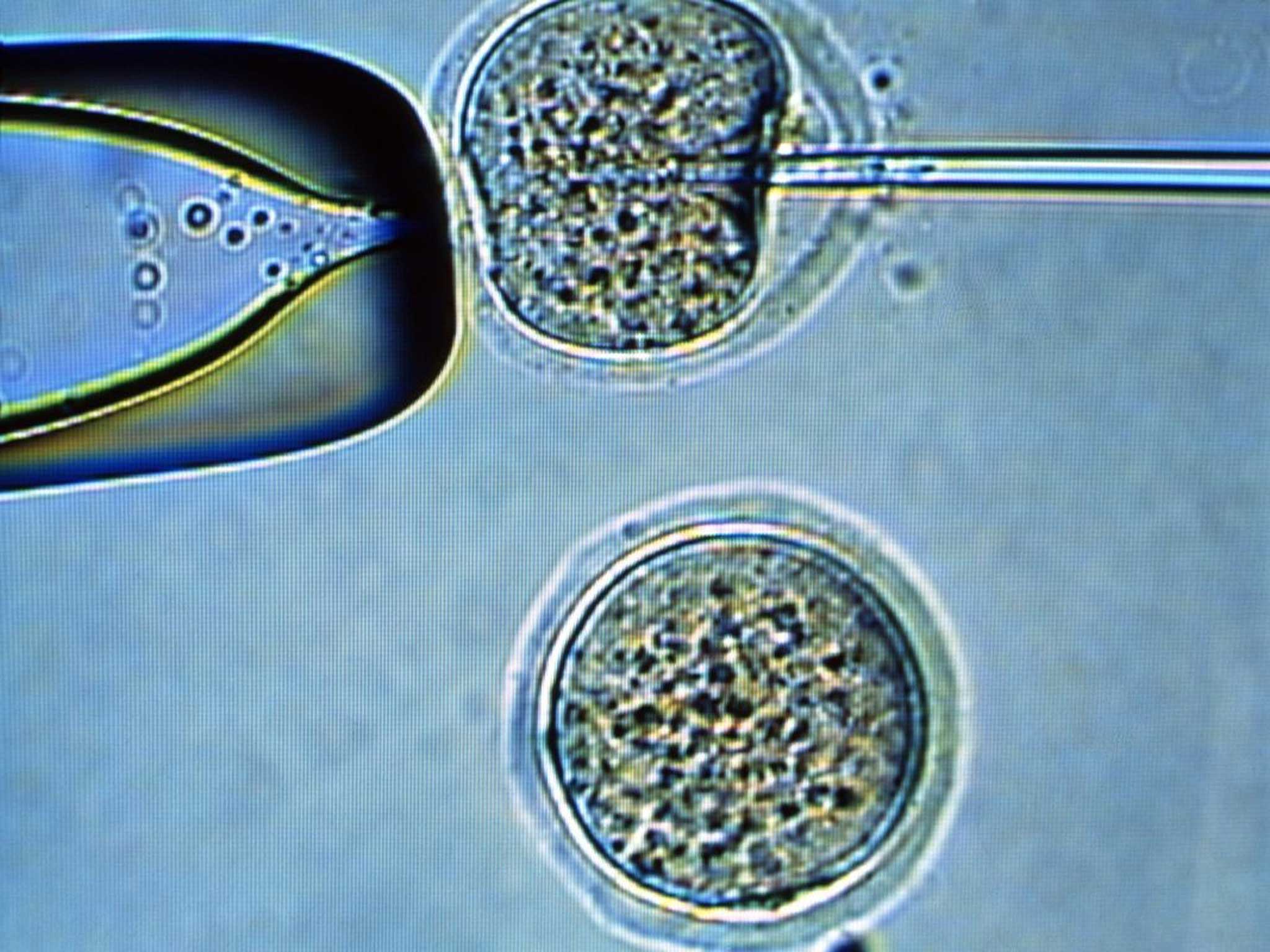Medical breakthrough: How caffeine and a little patience overcame obstacle that allows creation of stem cells from human skin - and heralds new era in fight against age-related diseases
'In the US, for instance, just 100 human embryonic stem cell lines would generate a complete tissue type match for over half the population'

A major obstacle to the creation of human stem cells from an adult patient's skin tissue has been overcome with the help of a little patience and a drop of caffeine, scientists have discovered.
For the first time, researchers have been able to produce human stem cells from early-stage embryos cloned from a man's skin cells using the same cloning technique used to produce Dolly the sheep nearly 20 years ago.
Adding small amounts of caffeine to the cells and waiting two hours for the effect to take place proved to be the crucial breakthrough needed to complete the process which had until this point failed to produce stem cells from human embryos cloned from adult skin, scientists said.
The achievement was designed to produce viable embryonic stem cells ultimately for medical transplant operations, but the same technology could also be used to produce viable cloned human embryos for reproductive cloning - which is illegal in Britain and many other countries.
Scientists emphasised that it is not their intention to produce cloned embryos that could develop in the womb of a pregnant woman, but they accepted that the success of the procedure makes this technically easier to do, although ethically and legally unjustifiable.
"Without regulations in place, such embryos could also be used for human reproductive cloning, although this would be unsafe and grossly unethical," said Robert Lanza of Advanced Cell Technology (ACT) in Marlborough, Massachusetts, the company that led the research.
Generating stem cells from cloned human embryos had only been achieved previously using skin cells derived from either a foetus or a young child - announced last year. Since then, several attempts to produce embryonic stem cells from adults had failed.
Scientists at ACT however have now produced the first human embryonic stem cells using cloned skin cells taken from two men aged 35 and 75. They produced two normal embryonic cell "lines" from two six-day-old human embryos cloned by inserting a skin cell nucleus into a donated human egg which had its own nucleus removed.
The breakthrough now opens the way to producing banks of human embryonic stem cells that can be tissue typed to match the huge number of patients suffering from various diseases that may be treatable with tissue transplants in the future, Dr Lanza said.
"The whole point of this is to help older people in the population who are more likely to suffer from the range of age-related diseases that could be addressed with embryonic stem cells, such as heart disease, diabetes or progressive disorders of the brain," Dr Lanza said.
"Although there's a shortage of human eggs, it's important to realise that the future of stem-cell technology isn't making hundreds of millions of patient-specific stem cell lines but rather making banks of matching tissue types," he said.
"In the United States, for instance, just 100 human embryonic stem cell lines would generate a complete tissue type match for over half the population. And in say Korea or Japan, you could probably get a complete tissue-type match for most of the population with less than a dozen lines," he added.
Another team of researchers led by Shoukhrat Mitalipov of the Oregon Health and Science University in Portland said last May that they had finally made the long-awaited breakthrough in human cloning by turning skin cells into early-stage embryos that were then used to create the stem cells necessary to make replacement tissue for transplant operations.
Read also:
They discovered that caffeine was the essential ingredient that reprogrammed the human cells back to their embryonic state but although they had tried adult skin cells, they only managed to get viable stem cell lines from skin cells derived from foetuses and infants.
Dr Lanza said that the crucial breakthrough was to extend the time period to allow the caffeine to work, from half an hour to a full two hours. This gave the cells the time they needed to be fully reprogrammed back to their early, embryonic state, he said.
"Therapeutic cloning has long been envisioned as a means for generating patient-specific stem cells that could be used to treat a range of age-related diseases. However, despite cloning success in animals, the derivation of stem cells from cloned human embryos has proved elusive," Dr Lanza said.
"Only one group has ever succeeded and their lines were generated using foetal and infant cells. However, the incidence of diseases that could be treated with pluripotent [stem] cell derivatives increases with age, so any therapeutic applications would likely involve aged nuclear donors," he said.
The latest study is published in the journal Cell Stem Cell.
Join our commenting forum
Join thought-provoking conversations, follow other Independent readers and see their replies
Comments
Bookmark popover
Removed from bookmarks